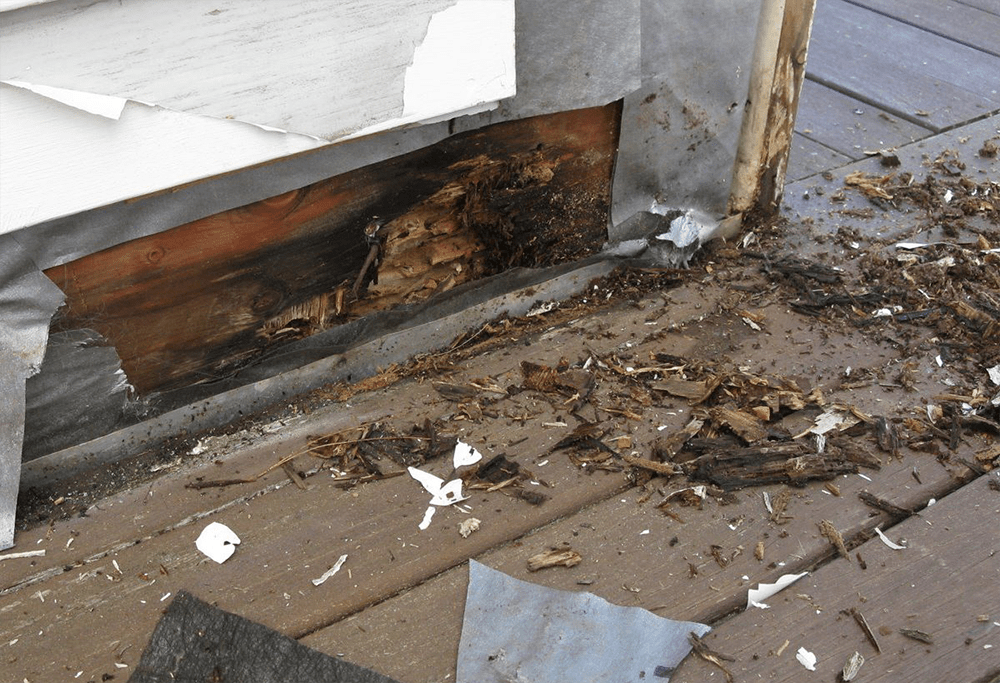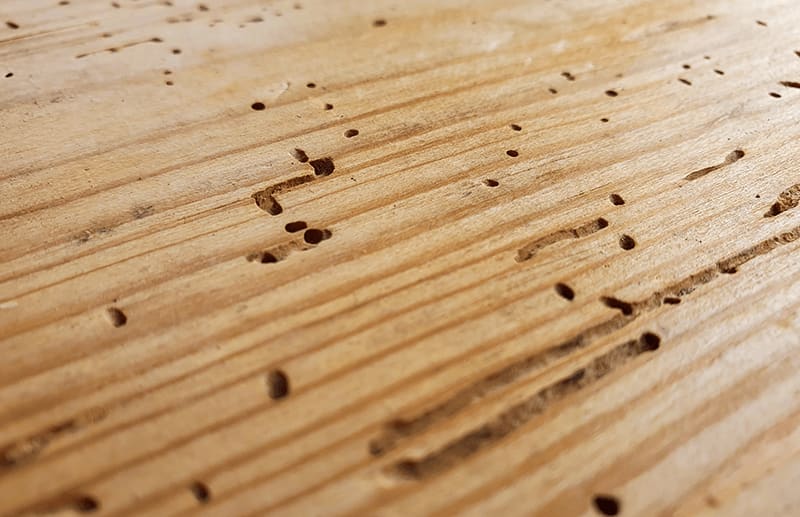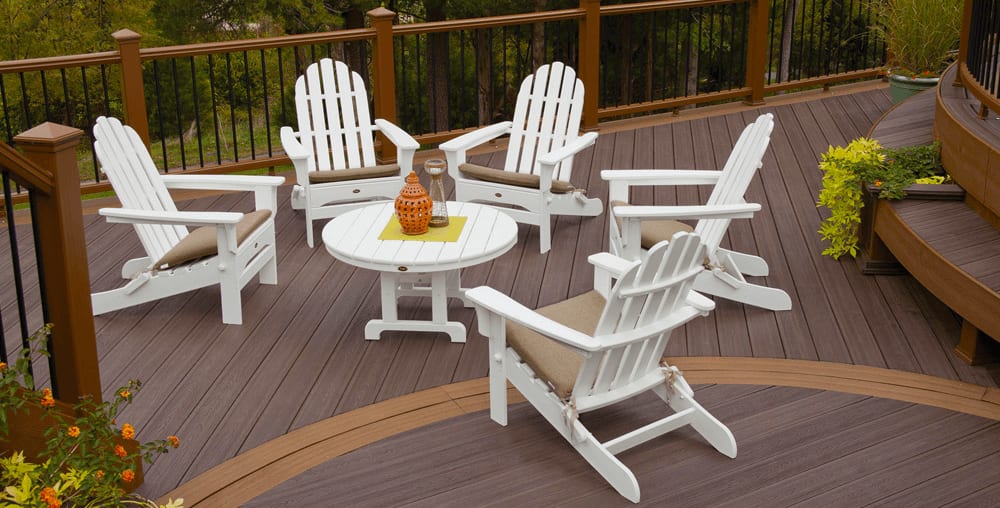May is Deck Safety Month, and it's the perfect time to make sure that your deck is in good condition for the upcoming summer season. A well-maintained deck can be an excellent addition to your home, providing a comfortable space for outdoor gatherings, barbecues, and relaxation. However, over time, the safety of your deck may become compromised. That's why it's essential to check and repair any issues before they become major problems.
When evaluating the safety of your deck, consider the following:
If you have concerns, consult a qualified deck or building professional for expert advice on maintenance and repairs, and to ensure that your deck is safe and up to code.
Rot and decay
Carefully examine the ledger board, support posts and joists, deck boards, railings, and stairs for any signs of damage, paying special attention to areas that stay damp or regularly get wet. To test, probe the wood using an ice pick or screwdriver: If it's easy to penetrate the surface, or if the wood is soft and spongy, rot is the likely culprit.
Ledger Board and Flashing
The ledger board is a critical component that attaches your deck to your house. Over time, the ledger board can become damaged or deteriorated, which can lead to deck failure. Check the ledger board for any signs of rot or water damage, as well as for any missing or rusted bolts.
Ensure that the flashing is secure and in good condition. If you notice any areas where water accumulates, consider adding or replacing flashing. Check out Trex Seal: State-of-the-Art Protection for Deck Ledgers for more on the importance of protecting the ledger board—and a revolutionary aluminum-lined flashing tape.

If you see signs of ledger detachment or connection issues, have them addressed immediately by a professional.
Joists, Beams, and Support Posts
The joists, beams, and support posts are the primary structural elements that hold up your deck. With time, these structures can become weakened or damaged, compromising your deck's stability. Check the joists and beams for any signs of rot, as well as for any sagging or uneven areas. Inspect the support posts for any cracking or splitting, and make sure they are securely attached to the foundation or footings.
If you notice any issues with the joists, beams, or support posts, it's important to address them promptly to prevent further damage or safety hazards. Depending on the extent of the damage, you may need to replace or reinforce the affected structures.
Safeguarding against rot
You can help minimize the risk of deck decay by addressing areas of moisture concern:
- Check that the deck boards are properly spaced to allow for water drainage.
- Be sure that your deck is sloped away from the house to prevent water from pooling.
- Protect your ledger board with proper flashing.
- Check that downspouts and gutters are directed away from the deck.
- Make sure nearby plants or trees are not contributing to excessive moisture buildup.
Insect damage
Insects such as termites and carpenter ants can cause significant damage to a deck's wooden components, including the decking boards, support posts, and framing. Signs of insect damage include small holes or tunnels in the wood, wood that appears crushed at structural joints, mud tubes, small piles of sawdust, and insect droppings, wings or the insects themselves around affected areas.

Some types of insect damage may not be visible from the surface. For example, termites may cause damage inside the wood without leaving any visible signs on the outside, although you may eventually detect resulting soft spots when walking your deck. This is why it's important to do regular inspections and take preventative measures to protect your deck from insect infestations.
Fasteners and hardware
Look for any signs of rust or corrosion on your fasteners and hardware, including screws or nails, nuts and bolts, hangers and connectors, post anchors, and brackets. Ensure that all hardware is in good condition, properly tightened, and secure.
TIP: It may be tempting to retighten a corroded screw rather than replace it. Don't do it. In addition to weakened connections, corroded fasteners can also cause deterioration in the surrounding wood.
Stairs
Stairs can be a major safety hazard if they're not properly maintained. Ensure that the stairs are level, stable, have sturdy handrails, and that the treads are securely attached to the stringers. Check for any signs of decay in the treads, risers and stringers, and test the steps to make sure they don't sag or move underfoot.

Key-Link American Series Picket Rail Kit
Reducing tripping and slipping
Here are some additional steps you can take to make you deck stairs safer:
- If the area behind the stair treads is open, the opening should be no more than 4 inches high to reduce the risk of someone catching their foot or tripping on the edge of the opening.
- Consider the addition of non-skid stair treads, especially if your deck steps are near a pool or water, to provide additional traction and reduce the risk of slipping on wet steps.
- Keep stairways clear of planters, toys, or other items that could pose a tripping hazard.
- Add stair lighting.
Railings
Railings and balusters serve an important safety function, preventing falls and providing support for those using the deck. During your inspection, take the time to physically test your railings. Grab hold of them and apply pressure to ensure that they are securely fastened and not wobbly.
Check for any signs of rust or corrosion on metal railings that could weaken their structural integrity over time. Wooden railing systems may be subject to rot, insect damage or warping, so look for any signs of these issues, including cracks, splits, or insect holes.
TIP: If a railing replacement is on your list, get your Free Railing Quote from DIY Home Center to start your project off right!
If you have young children or pets on your deck, consider adding additional safety features to your railings, such as netting or guards, to prevent accidents.
Debris and dirt
Clean away any leaves and debris that can make the deck slippery and encourage mildew. If mildew is present, clean it off and apply a new waterproofing coating to prevent decay, loosened fasteners, and split wood.
TIP: For deck cleaning and sealing products, rely on tried-and-true options from DeckWise and Penofin to protect, restore, and revitalize your deck.

Lighting and electrical
In addition to checking that all lighting is in working condition and cleaning light covers, make sure that your deck has adequate lighting overall. Consider installing new deck lighting to illuminate the steps and pathways, and prevent accidents and injuries.
TIP: Learn about solar options with Shedding Light on Solar Deck Lighting, and find out how to put lighting control in the palm of your hand with Control Your Trex Deck Lighting from Anywhere.
Ensure that all electrical outlets and appliances are properly installed, in good condition, and childproof if kids are present. Check for any electrical cords that could pose tripping hazards, and use cord covers to keep them out of the way.
Furnishings
After an off-season of storage or exposure to the elements—or just another year of use—test all your outdoor furniture to make sure it's still sturdy and address any rust, splinters, or sharp edges that could pose a risk.
Test the chains and ropes of swings and hammocks to verify they're secure and hold weight. When arranging seating on your deck, avoid placing it right at the edge, as this can increase the risk of falls.

Storage
Consider installing childproof latches on any deck storage boxes and benches, both to secure the contents and to avoid a curious child from becoming stuck inside.
All deck-related chemical products and other potential dangers, such as BBQ lighter fluids, matches, and cleaners, should be stored safely away from kids' reach.
Landscaping
Make sure that any trees surrounding the deck are healthy and not at risk of falling branches or limbs. Cut back any overhanging branches that could potentially damage the deck or harm people using it. Keep any shrubs or plants near the deck trimmed and maintained to avoid obstructing walkways, creating tripping hazards, or causing wetness that can result in rot as well as surface slickness.

Prioritize deck safety
May is the perfect time to prioritize the safety of your deck and ensure that it's in top condition for the upcoming summer. Start with the checklist above and tend to any necessary maintenance and repairs now so you can have peace of mind knowing that your deck is safe and ready for use. With your deck in great condition, you can look forward to many enjoyable and memorable moments spent with family and friends throughout the season ahead.
Related Read: Your Wood Deck is 15 Years Old: Now What?
Be sure to check your local building codes before starting your project and follow all rules, regulations, and requirements.
Consult a qualified deck or building professional for an expert safety evlauation and help with recommendations or repairs.




